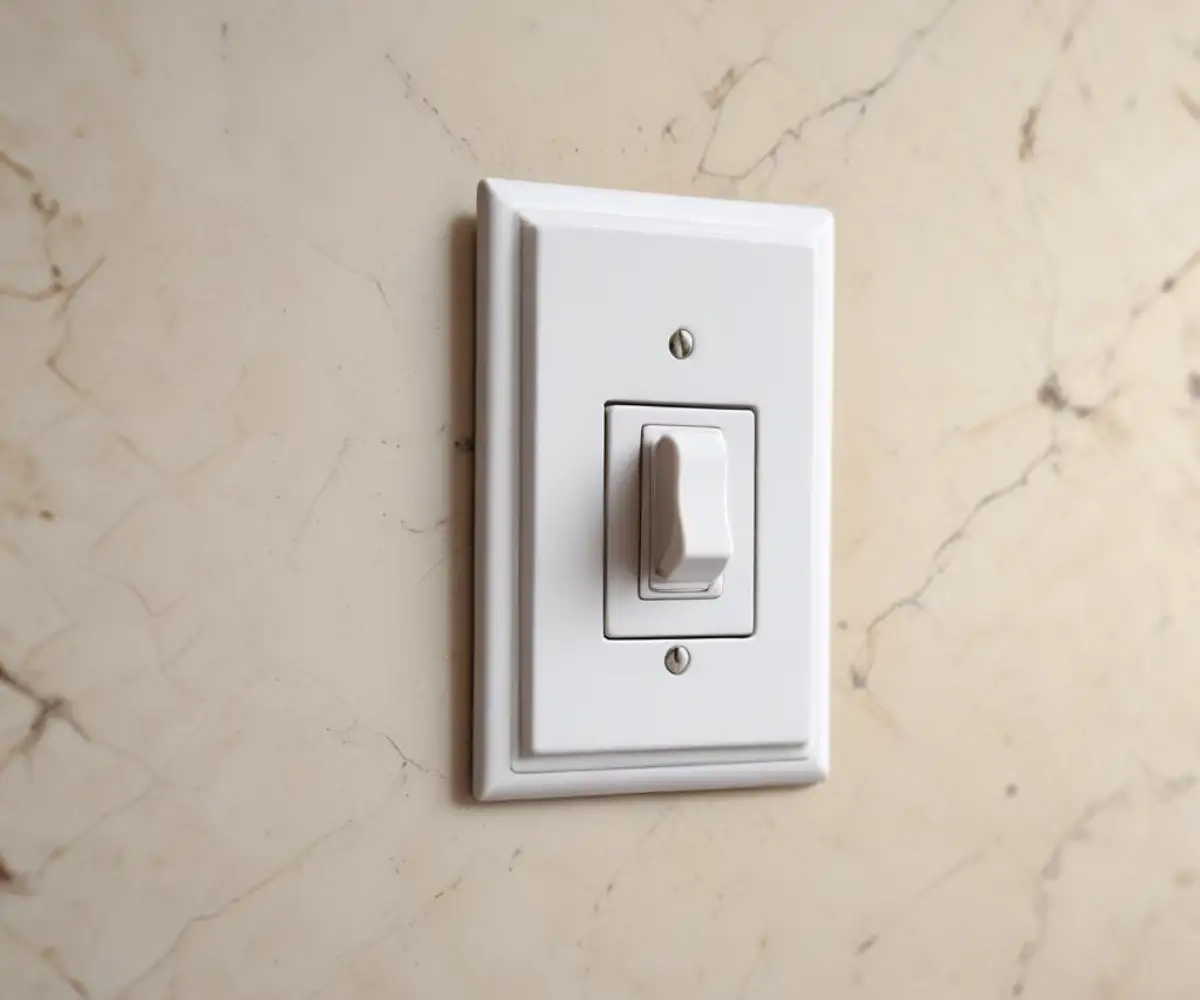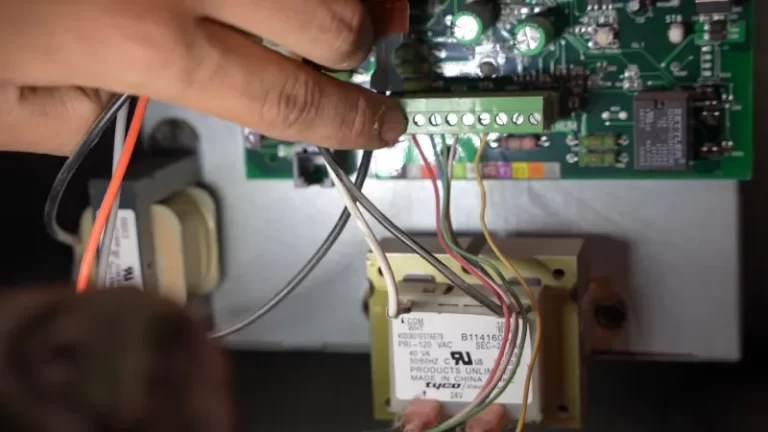Dishwasher Switch Not Working? Your Ultimate Fix-It Guide
You’ve loaded the dishwasher, added detergent, and pressed the start button—only to be met with silence. When your dishwasher shows no signs of life, it’s easy to assume the appliance itself is broken. However, the culprit is often a much smaller, overlooked component: the dishwasher wall switch.
This simple switch is the gatekeeper for the power flowing to your appliance, and when it fails, your entire kitchen cleanup routine comes to a halt. Understanding how to diagnose and fix this switch can save you from an unnecessary service call and get your dishwasher running again in no time.
You'll Learn About
Why Your Dishwasher Has a Wall Switch in the First Place
That unassuming switch on your wall or under the sink isn’t just for decoration. In many areas, electrical codes require a dedicated, easily accessible means of disconnecting power to hardwired appliances like dishwashers. This allows for safe servicing without having to go to the main circuit breaker panel.
Think of it as a localized safety feature. For appliances that handle both water and high-powered electrical components like heating elements and motors, having a quick shut-off is a crucial protection against electrical shock and other hazards during maintenance.
Signs of a Failing Dishwasher Switch
A faulty dishwasher switch can manifest in several ways, some more obvious than others. Being able to recognize these signs is the first step in diagnosing the problem correctly and avoiding wasted time looking at the appliance itself.
Common symptoms include no power to the dishwasher (no lights on the control panel, no sounds), intermittent power that causes the dishwasher to shut off mid-cycle, or a switch that feels physically loose, “mushy,” or makes a buzzing or crackling sound when flipped. In more severe cases, you might notice discoloration or scorch marks on the switch plate, or even a distinct burning smell, which indicates a serious electrical fault that needs immediate attention.
A Step-by-Step Guide to Troubleshooting the Dishwasher Switch
Before you can fix the problem, you need to confirm that the switch is truly the issue. This diagnostic process is straightforward but requires a focus on safety. Always remember that you are dealing with household electricity, which can be dangerous.
Step 1: Prioritize Safety Above All Else. Before touching any wires or removing the switch plate, go to your home’s main electrical panel and turn off the circuit breaker that controls the dishwasher. If your breakers aren’t labeled, you may need to turn off the main breaker to be completely safe.
Step 2: Check the Basics. It might sound simple, but first ensure the switch is flipped to the “ON” position. Sometimes it gets accidentally turned off. If the switch was on, check the circuit breaker to see if it has tripped. A tripped breaker will be in a middle position between ON and OFF; reset it by pushing it fully to OFF and then back to ON. If it trips again immediately, you have a larger electrical issue that requires a professional electrician.
Step 3: Test the Switch with a Multimeter. This is the definitive way to know if your switch is faulty. After turning off the power and removing the switch plate, carefully pull the switch out from the wall box. A basic single-pole switch will have two hot wires (usually black or red) connected to two brass screws and a ground wire (bare copper or green) connected to a green screw.
Set your multimeter to the continuity setting (often indicated by a sound icon). Place one probe on each of the brass screw terminals. With the switch in the OFF position, there should be no continuity. When you flip the switch to the ON position, the multimeter should beep or show a reading near zero, indicating a complete circuit. If it fails either of these tests, the switch is broken and must be replaced.
Beyond the Wall: Understanding Countertop Air Switches
While most dishwashers are controlled by a standard wall switch, some modern kitchens use an “air switch” or “deck switch.” This is a button, usually mounted on the countertop near the sink, that uses a puff of air sent through a plastic tube to activate an electrical switch located safely under the sink. This design keeps high voltage away from wet hands.
Troubleshooting an air switch is slightly different. You’ll need to check that the air tube is securely connected at both the button and the under-sink control box. A disconnected tube is a common and easy-to-fix reason for failure. If the tube is connected, the electrical control box under the sink can be tested just like a standard switch.
How to Replace a Faulty Dishwasher Switch Safely
If your troubleshooting confirms a dead switch, the good news is that replacing it is a simple and inexpensive task for a confident DIYer. It requires only a few basic tools and about 15-20 minutes of your time.
First, gather your tools: a new replacement switch (ensure it has the same amperage rating, typically 15A or 20A), a flathead and Phillips screwdriver, a pair of wire strippers, and a voltage tester for a final safety check. With the power confirmed to be off at the breaker, follow these steps:
- Unscrew and remove the switch plate cover.
- Unscrew the mounting screws holding the old switch in the electrical box.
- Gently pull the switch and its connected wires out of the box. Before disconnecting anything, take a clear photo with your phone. This will be your guide for wiring the new switch.
- Unscrew the terminals to release the wires from the old switch.
- Connect the wires to the new switch exactly as they were on the old one. The black (hot) wires connect to the brass screws, and the bare copper or green (ground) wire connects to the green screw. Ensure the connections are tight.
- Carefully fold the wires back into the electrical box as you push the new switch into place.
- Secure the switch with its mounting screws and reattach the cover plate.
- Go back to the electrical panel, turn the breaker on, and test your work.
This same diagnostic process can be applied to the switch for other kitchen appliances, which is helpful if you find your garbage disposal stops working as well, since the switches are often located side-by-side.

Choosing the Right Replacement Switch
When you head to the hardware store, you’ll see a few different types of switches. For a dishwasher, it’s crucial to select the correct one based on your circuit’s requirements. Using an underrated switch can create a serious fire hazard.
Your circuit breaker will tell you the amperage you need—most residential kitchen circuits are either 15-amp or 20-amp. The replacement switch must match or exceed this rating. The table below breaks down the common options.
| Switch Type | Common Amperage | Best For | Key Features |
|---|---|---|---|
| Standard Toggle Switch | 15A | Most common and basic applications. | Simple, reliable, and cost-effective. A standard choice for 15-amp dishwasher circuits. |
| Decorator (Paddle) Switch | 15A / 20A | Modern aesthetics and matching other switches. | Functionally identical to a toggle switch but with a larger, rectangular shape for a updated look. |
| Heavy-Duty Spec-Grade Switch | 20A | Circuits with higher power draw, like more powerful dishwashers. | Built with more robust components to handle higher electrical loads safely and reliably. |
| Smart Switch | 15A | Home automation and remote control. | Allows you to control the dishwasher power via a smartphone app, but ensure it’s rated for motor loads. Not all are. |
When You Absolutely Should Call a Professional Electrician
While replacing a switch is a manageable DIY project for many, there are clear situations where calling a licensed electrician is the safest and smartest choice. Electrical work carries inherent risks, and there is no shame in deferring to an expert.
You should call a professional if you feel even slightly unsure about the process, if you see signs of a bigger problem like melted wires or significant scorch marks inside the electrical box, or if your home has older aluminum wiring, which requires special handling. Furthermore, if you replace the switch and the dishwasher still doesn’t work, the problem lies elsewhere in the circuit or the appliance, and a professional can diagnose it accurately.
The Hidden Dangers of a Defective Switch
A faulty dishwasher switch isn’t just an inconvenience; it can be a genuine safety hazard. A switch with loose internal connections can create electrical arcs, where electricity jumps through the air. This arcing generates intense heat, which can easily melt the switch’s plastic housing and ignite nearby materials, leading to a house fire.
Moreover, a failing switch can provide intermittent or “dirty” power to the dishwasher. These rapid power fluctuations can wreak havoc on the appliance’s sensitive electronic control board, potentially causing a much more expensive failure than the switch itself. Addressing a faulty switch promptly is a critical maintenance step for protecting both your home and your appliances.
Frequently Asked Questions About Dishwasher Switches
Does a dishwasher legally need a dedicated wall switch?
In many jurisdictions, the National Electrical Code (NEC) requires a means of disconnect for the appliance. This can be a wall switch or a cord-and-plug connection to an outlet under the sink. Hardwired installations almost always require a switch or a breaker lock nearby.
Can I use a dimmer switch for my dishwasher?
Absolutely not. A dimmer switch is designed to regulate power to lighting fixtures and is not built to handle the high-power, inductive load of a dishwasher motor. Using one will damage the dimmer, the dishwasher, or both, and creates a significant fire risk.
Why does my dishwasher switch feel warm to the touch?
A switch that is slightly warm under load can be normal, but if it feels hot, it’s a major red flag. A hot switch indicates that it is struggling with the electrical load, likely due to a loose connection or an internal fault. Turn off the power at the breaker immediately and replace the switch.
Ultimately, a non-working dishwasher switch can bring your kitchen to a standstill, but it doesn’t have to be a major crisis. With a methodical approach to troubleshooting and a strong emphasis on safety, you can identify and resolve the issue yourself. Don’t let a simple switch disrupt your daily routine—take control of the repair and restore order to your kitchen.

